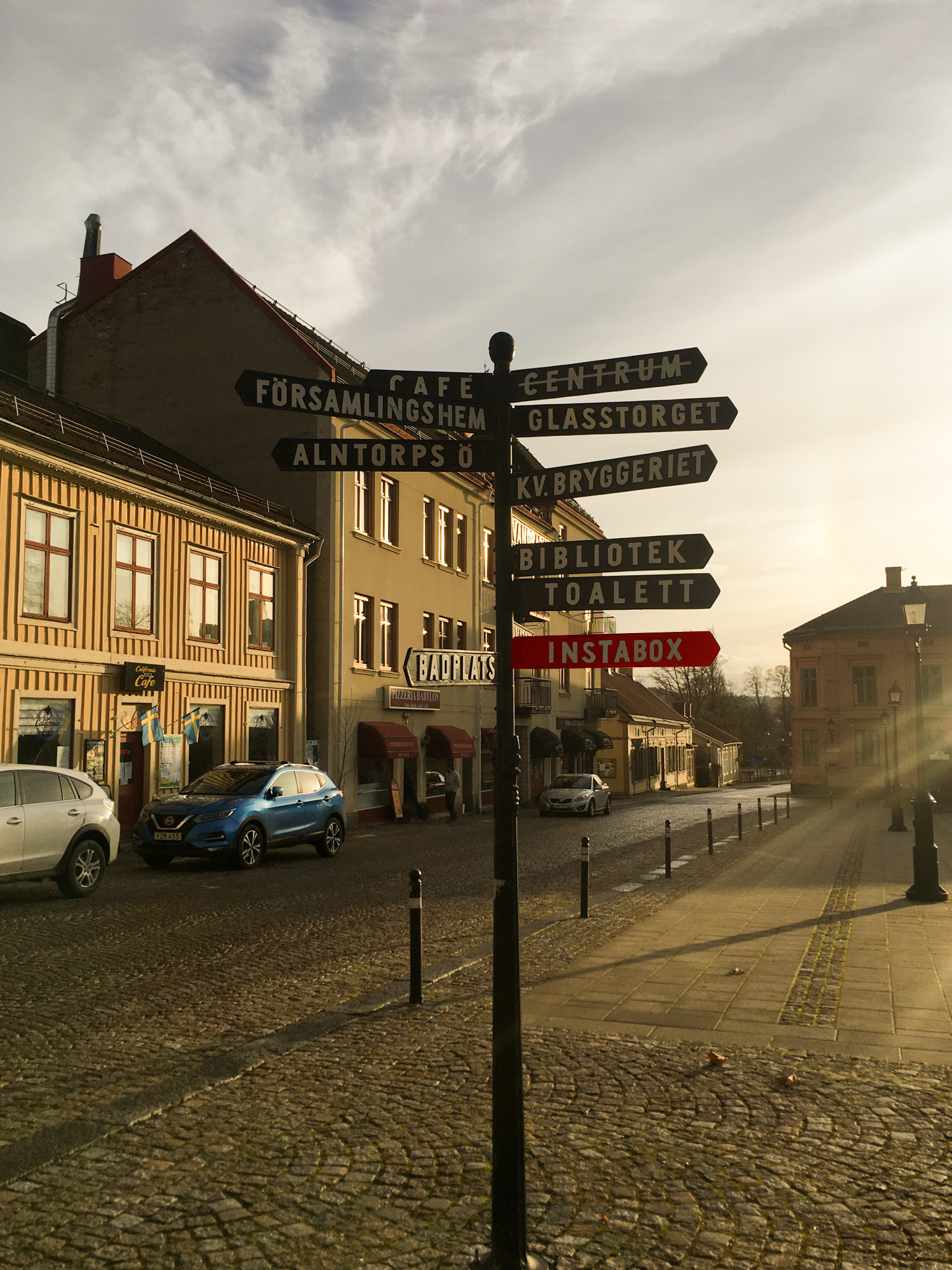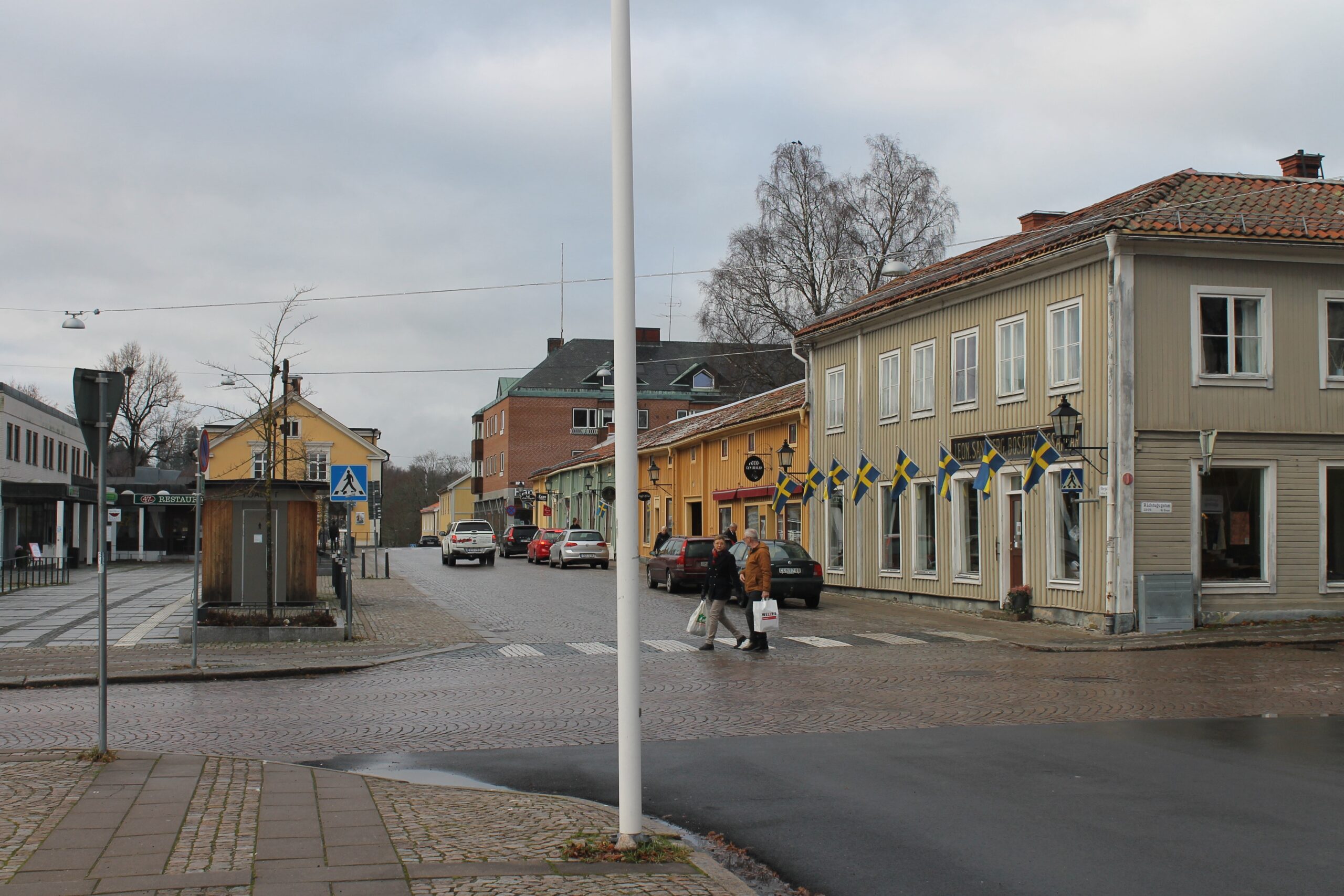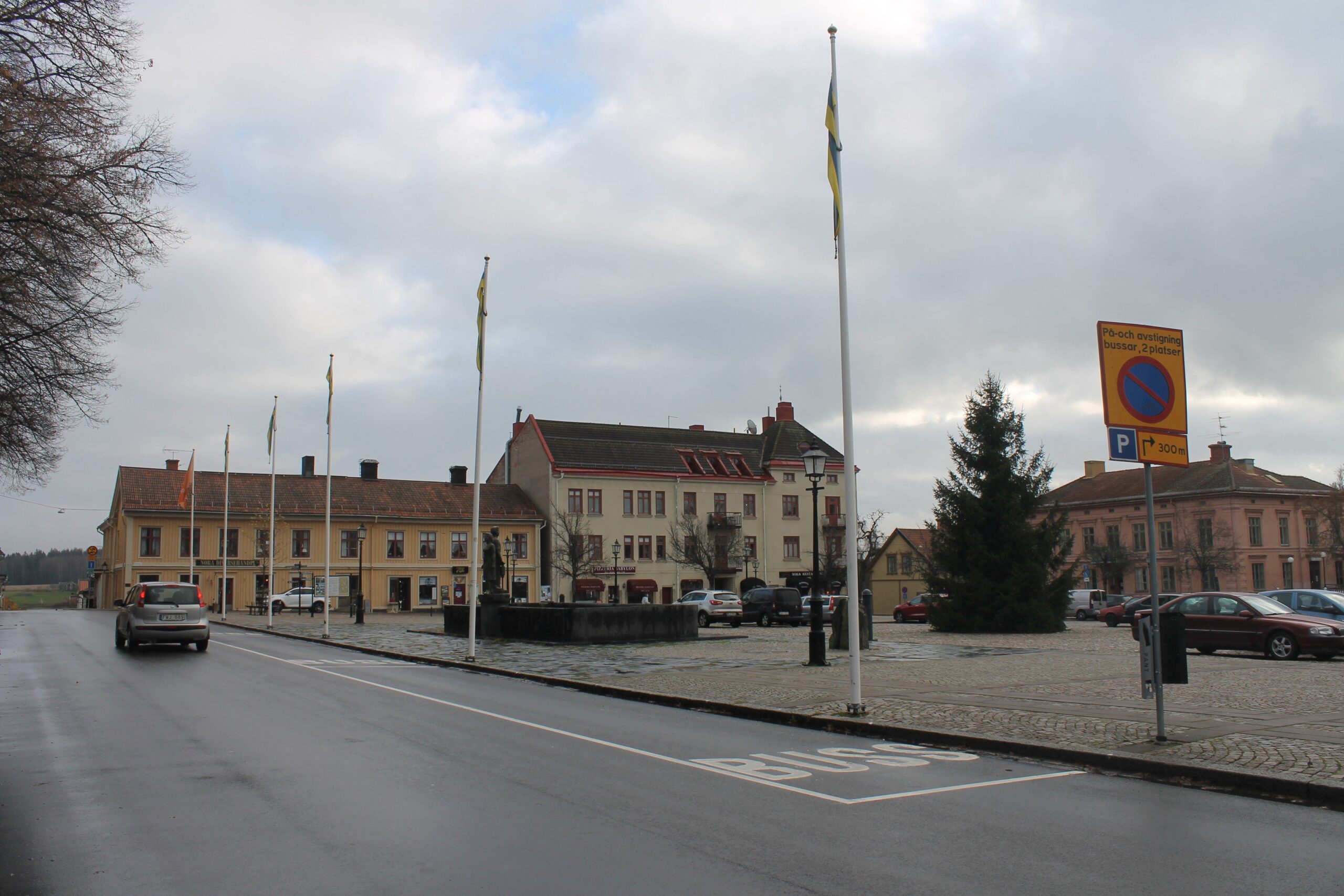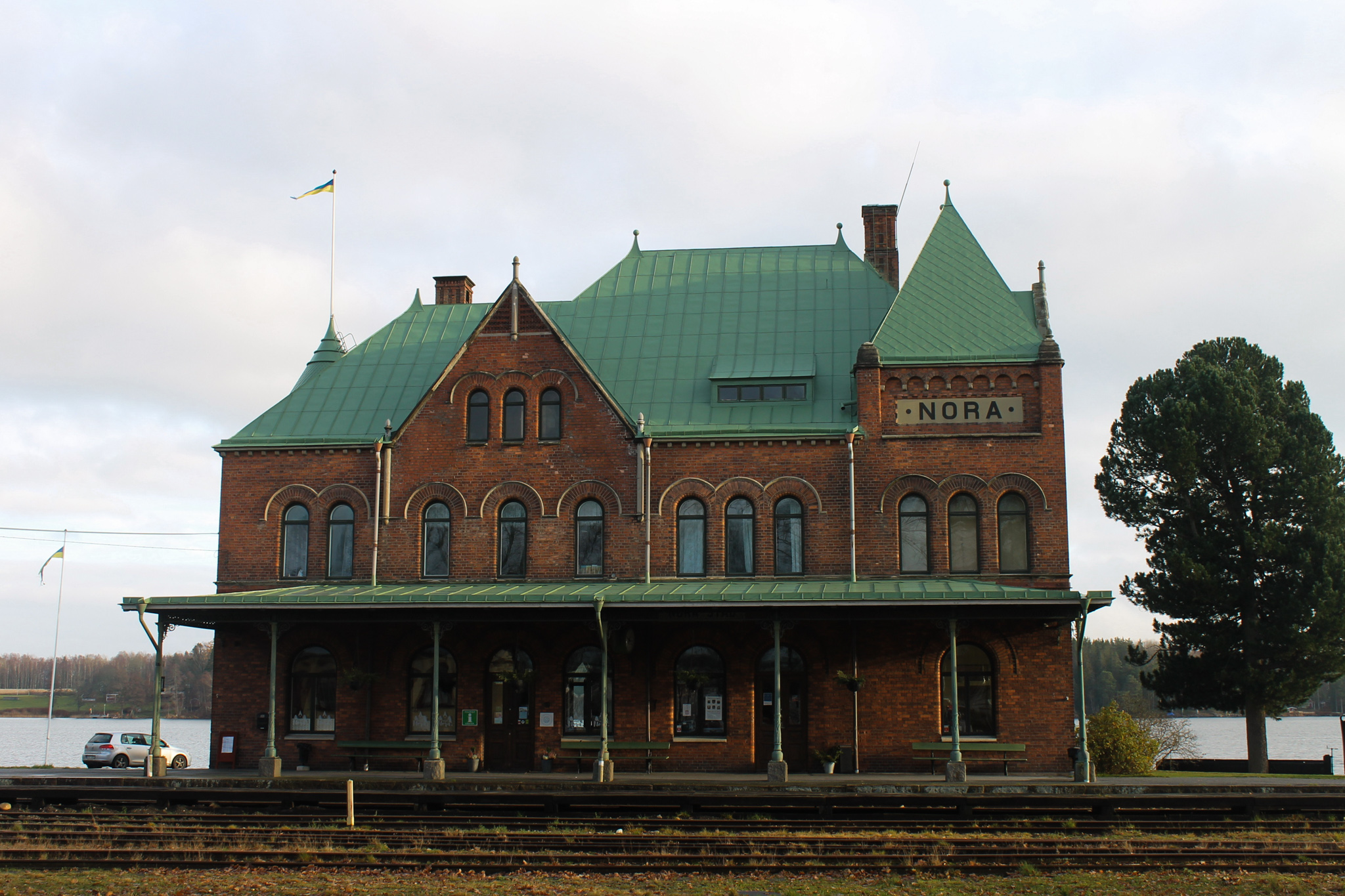The Dark Side of The Centrum
︎ Social transitions
︎ Ecological transitions
︎ Spatial transitions
︎ Un-built environments
︎ Built environment
What is left for the centrum? Do we need to talk about the transformation of small town centrums, as new understanding of public space, as sites of encounter and consumption shifts to cyberspace?


Small towns are an element in the web of urbanisation; they are fundamental to processes of socialisation, education, democracy, commerce, consumption, culture, and heritage. The centrum is the stage in which these processes and practices play out. However, more and more the centrum has been transformed. Mechanisms of urbanisation, digitisation, and digitalisation have created a shift — consumption and civic-political discourse have moved the centrum in the public space to cyberspace. At the centre of the less-dense urban contexts, a small town centrum is crucial for the viability of the area, where the residents impact the town, as much as the town can impact the quality of life for residents in the town and surrounding area. How ca we envision future centrums in small towns? Can we identify and sustain the elemental processes and activities in the centrum – namely as a meeting place and consumption space? Is it possible to recognise their provenience while taking their physical form and tangible qualities into a digitised future, where those who live in less dense urban areas can determine their public space?
Why is the centrum important?
Small towns are an integral part of the built environment – as local urban areas, nodes in a network, as part of a rural landscape. In urban morphology, the Ancient Greek agora, the British market square, Italian piazza or Swedish torg is traditionally the heart of a village or town. It serves as the meeting point for economic, civic, political and social activities, existing both as a destination (node) and a place to begin the journey (link). Rural towns conjure images of agricultural activities and industry, which are only an element in today’s rural towns, but activities such as commerce, education and recreation are mirrored as in urban areas. As detailed in the research of Countryside Unfolds , there is an urgent need to understand rural areas in a globalised and urbanised context where previously a lack of place specific spatial planning reproduces inequalities. This reasoning can be extended to the comprehension of centrums functions and place in the wider urban sphere. A challenge faced is that of reframing our understanding of the importance of centrum, of consumption patterns, of public life and how space is used, as small towns play an important role and have opportunities unseen. Historically, small towns are part of a rich tapestry of urban forms, interconnected throughout a region’s landscape affected by climate and culture, shaped by humans. The centrum is the centre of a town, whereby it can take a number of shapes or forms with varying degrees of formality. The centrum is the representative public space of a town, the location of the church, the forum in which commerce transpires. The centrum, or more recently the high street, is traditionally the centre of consumption and public life in a small town. The centrum serves as a meeting place in public, as a place for consumption (retail, cafes, restaurants), as a place for community building (activities, events, gathering) and as a place of pride (culture, memory, history). It is often the most enduring element in the town – it remains despite surrounding changes and is recognisable centuries after.

The trajectory of small towns in the urban narrative is undetermined, for lack of context specific investigation and lack of emphasis in an urbanized world. In the past century, shifts from an agricultural landscape to industrialisation to an extensive knowledge economy has had a significant influence on population patterns. These patterns have affected small towns, whereby many have seen a population decrease proportional to a rise in populations in large urban areas. In Sweden, 63% live in urban areas with 10,000 inhabitants or more (Statistiska Centralbyrån. 2019). The emphasis in urbanisation theory often falls on cities, agglomeration effects, improving cities and sustainability. Cities occupy the (focus) center, while the rural remains peripheral, serving as a resource, a cultural landscape and as an escape from the frenetic urban. Thus, 37% of people live in urban and less-urban forms with inhabitants fewer than 10,000, areas that have various designations as peripheral or non-urban, yet their functions are not unlike that of larger urban areas. They occupy both the periphery as less-dense urban forms embedded in the hinterlands, while simultaneously existing as the centre of the surrounding hinterlands.

The small town offers a stage to a considerable number of processes, services and activities; at its core is the centrum. The centrum is relevant on a number of scales, both mental and physical – as an entity in itself, on a local level as the centre of the rural context, peripheral to city agglomerations and, on a regional level as part of a network of smaller towns. Density is one of the most widely used indicators of urbanity where large cities are considered most urban yet small towns are no less urban in their purpose. At the smallest functional unit of urbanisation we have the centrum – the cultural, social, commercial and legal centre of urban form. The landscape plays an integral role where the boundary of what is rural and what is urban shifts. The urban proclaims all the rural landscapes to be rural, but the experience in the small towns is often far from rural – residents live a wholly urban life albeit in a different landscape to that of the city. The “urbanisation” of rural areas has been carried out on many levels (Bundesstiftung, 2017). Urban centres range from half a million to a few thousand inhabitants yet, with such a broad category the necessary spatial and economic practices and politics can be misconstrued. Starting at the smallest unit, this reflective research will look at the importance of the small town centrum, the processes of digitisation and digitalisation which influence it and shape the challenges faced.
The decline of the small town centrum and the question of small towns has not so much been ignored but overshadowed in how urbanisation trends have been framed in the past century. The rural town can be associated with a kind of extraction or consumption, of heritage, of culture, of tourism. Many small towns have been dependent on tourism where the past pays for the future. The heritage of towns is a medium through which value can be generated, a type of transaction occurs. This calls into question the raison d’etre of a small town in a rural landscape where small towns require the creation and sustained evolution of a town for residents, not for those passing through. On a regional level, towns develop both within the fabric of the region, as an embedded link in a network of small towns in the surrounding region. They can provide a network that supports each other, sharing knowledge, experience and resources, where a narrative can be developed through place-making. The success of one town can perpetuate the success of others in the surrounding area; a network is developed creating an attractive area to live, a web of engagement and exchange. They also fulfil roles separate to this embedded regional function, and exist solely for the needs of the residents of the town, as a hub for economic, social and consumptive activities. By defining itself and the right to exist as an entity in itself, with a certain internal integrity for the residents and the future residents, rural areas can define their own challenges and possibilities.
What happens when the fundamental purpose of the centrum changes?
The conversation regarding public space is, more often then not, situated indense urban areas. The centrum is at the heart of the community, whereby a vibrant centrum satisfies the needs of the residents, but also makes the character of the place felt (Bundesstiftung, 2017). There are a number of elements to consider in the vitality of a public space, namely the quality of stay and life, the functional diversity, and the easy accessibility to create the foundations, offering vibrancy and a breadth of experience (Bundesstiftung, 2017). Space tailored to the user best positions it as a meeting place – strengthening human interaction and creating social relations while providing people with a reason to frequent it. The centrum is conceivably the most visible element in the public sphere of a town. Quality public space is understood to be a place for relaxation but also movement, with regular and optional activities or events occurring. The centrum offers a physical reference for the identity of the residents, which exists in itself but, also as an aspect of the surrounding landscape. The seminal work of theorist Jan Gehl, outlines that life between buildings is one of the central urban attractions; essentially all that occurs in the public space. It is greatly influenced by physical planning, where patterns of activities can be affected, ultimately creating lively – or lifeless – spaces.
Public space is the shared space in the urban forms at all scales; the ground outside the door, the space between buildings, a green space, the central square; where residents are free to be and to use. Some spaces may hold greater significance, such as the centrum, for specific activities but all public space has the opportunity to enhance the residents quality of life, to provide social connections, intentional or otherwise. Types of public space overlap extensively in the form of the centrum – it is at once a civic-political space, a consumptive space, a recreational space, even a green space. Digitisation and digital transformations have fragmented the functions of the centrum namely in the realm of politics and ideas that are instead shared online disconnected from the public space, whilst online shopping has increased, changing the landscape of consumption. What happens when the fundamental purpose of the centrum changes? From a meeting place, to a place of commerce to a transit node, to a car park? What elements are important and who gets to define what it is and what it could be.

The future of contemporary public space and more specifically centrums is uncharted territory, where processes of digitisation and digital transformation have distorted the historical formula.
Public space as a meeting and civic discourse space, a timeworn function of the centrum, is losing its bound in the physical realm. As with many aspects in life, digitisation has seen a shift from the analog to the digital world in our communication, commerce, banking, education and play. Public life and the act of meeting has followed this trajectory where engagement, discussion, communication and campaigns play out on various online platforms. “Public space” has emerged in cyberspace. In a digitised format these new understandings of public spaces are vast and full of endless possibilities. However, ownership and access raise questions regarding the truly public nature of digitalised “public space”.
In light of changing trends of public space the question is raised – do we need a new way to understand and design public space? As a medium for democracy, public space was the stage for exchange of ideas, commerce, debate and politics. The internet provides a stage for the exchange of ideas, commerce, debate and politics that bypasses the physical realm. It becomes both easier for people to access but also removes space that was designed for physical encounters. By being online the “public forum” is detached from place which has produced innumerable benefits for political mobilisation, which we have seen play out over the last two decades. However, public spaces no longer have a monopoly on these interactions, the centrum as a site for gathering and protestation is no longer a given. Where we once connected public space to the citizen and as a space for consumption, a migration of both online leaves us asking what’s left? What is the future of public space?
Public space for consumption?
Small towns are affected by a number of enduring changes in consumption trends whereby public space as a place for consumption and economic activity is experiencing a transition. The first shift is spatially bound, where recent decades have seen a shift in commercial and consumer activities from urban centres to peripheral areas in the form of retail parks or shopping centres. With almost universal societal dependence on cars, especially in rural areas, it is possible to travel further for services and commercial activities. The dual force of supermarkets/retail parks and cars place centrums and high street shopping under significant pressure. Retail is thus spatially concentrated, easily accessible by car, but peripheral to traditional town centres, separated from the variety of life found in public space.The importance of spaces of consumption cannot be underestimated in their secondary function, in that they serve as places for intentional or chance encounters; meeting and socialising. A second enduring change, albeit an organisational trend tied to globalisation and agglomeration, is the proliferation of conglomerate brands and chains that have the monetary and organisational reach to embed in an extensive range of urban forms as well as online. Globalisation means supermarket chains offer an extensive selection of goods often at prices that may not be available in the town, while cars grant a level of access, ease and mobility. The traditional corner shop, post office, cafe and tobac are being replaced by a chain store. In terms of competitive pricing and buying reach, locally owned individual shops are at odds. This trend is applicable to a multitude of commercial categories, from milk to shoes. These changing trend pathways are tied to many societal shifts in the last half century – work, travel, consumption, communication, and technology have changed beyond recognition. The flourishing changes in consumption patterns demonstrate the demand for convenience and value. This can be understood in the astronomical increase in Amazon’s growth where net profits increased 84% for 2020 compared to 2019 (Kohan, 2021). The company excels as a digital platform and proficient supply chain management allows Amazon to emulously challenge any competition, which the pandemic has accelerated. Amazon opened in Sweden in 2020 as part of its continued expansion. The value and convenience of digital retailers negates many of the adversarial aspects of moving consumption from physical space to cyberspace and, from local communities to Jeff Bezos.
Consumption patterns pertain to everyday goods and services, but also to leisure, culture and travel (Zukin, 1997). Increasingly, this takes place online and not in town centres. The growth of online retail, changing consumer landscapes and behaviour and a lack of critical mass threaten consumption spaces in urban forms the world over, where there has been a shift away from the centrum to shopping centres to shopping online. Recent numbers show 70% of Swedes shopped online in December 2019, which increased to 85% in December 2020 in a study from PostNord. The centrum has many purposes, but consumption may be one of the most visible and important in that it can be a defining element in the vitality of a small town. In the Swedish Rural Development Programme for Sweden (2007-2013) a defining element to development in rural areas is that a good general level of services are provided (Regeringen, 2013). However, services are increasingly located in the digitised realm. For example, it is now possible to visit the doctor online without leaving home with online services. Convenience online has shaped a new way of consumption. A paradox appears between sustaining points of consumption in the town or city, and consumers choosing convenience and value elsewhere. Spatial strategies thatinclude consumption in the future of small town centrums is integral to their viability. A future without changes to the politics of planning and commercial development and support for local regional actors will only serve the relentless expansion of placeless brands and actors. Imagine an instabox housing packages from Amazon and Zalano in the centrum, which does not add value to the town. A physical presence in the centrum, in places of consumption, in the community is what makes urbanity special, and important for its inhabitants. Where can towns differentiate themselves, that residents and retailers alike can evolve into a future for small town centrums where the physical space is sustained?
Future Centrums
An interesting observation from the urbanist Jan Gehl, is that the life between buildings is somewhat self-reinforcing. When someone begins to do something, others may join in or act of their own accord, thus influencing one another. When this process is set in motion, the sum of activities is almost always greater and more complex than the original activity (Gehl, 2006). This chain of events is an element of what makes public life important; it is a chance to engage with other people, to learn about the community and society. Public space as the stage for meeting and a space for consumption is undergoing transitions in light of the aforementioned phenomena. This raises the question – how will the post-consumption centrum look? The impact of current digital technologies will change the public space in towns as it is known today and, potentially the quality of life. If one is to engage and consume in a digitised forum, what is left for the centrum? Is there space for non-commodified practices and processes to evolve into this every changing space?
The dual nature of the centrum, both as public civic space and a space for consumption requires a multifaceted approach in spatial and economic planning; looking at these shifts and considering how the centrum can be re-envisioned is a way forward. The centrum, and by extension the public space of a small town, as well as the town itself will lose its vitality if the question of small town centrums is ignored. In short, small towns will struggle to maintain local commerce and consumption activities which contribute to public life, in light of the trends outlined above. What are we consuming in the centrum? How can those who live in less dense urban areas determine their public space? What functions do people imagine? Without taking a position, the workings of the centrum will further lose their character, as well as the exclusion of a portion of society that inhabits small towns.
LABLAB
ROSENLUNDSGATAN 38
118 53 STOCKHOLM